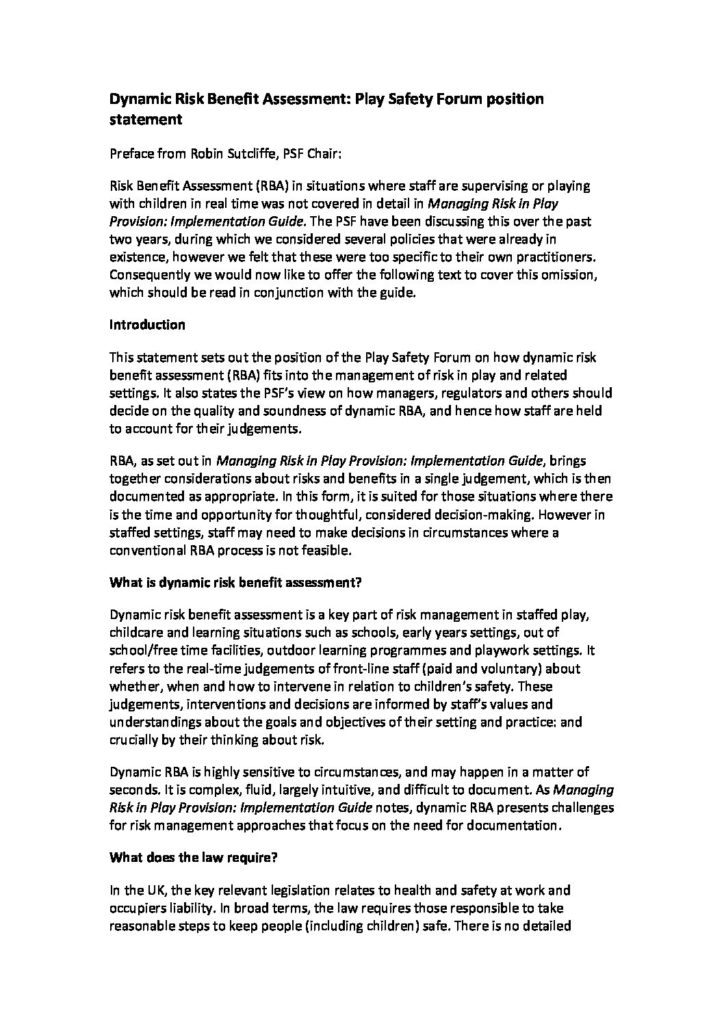This statement sets out the position of the Play Safety Forum on how dynamic risk-benefit assessment (RBA) fits into the management of risk in play and related settings. It also states the PSF’s view on how managers, regulators and others should decide on the quality and soundness of dynamic RBA, and hence how staff are held to account for their judgements.
RBA, as set out in Managing Risk in Play Provision: Implementation guide, brings together considerations about risks and benefits in a single judgement, which is then documented as appropriate. In this form, it is suited for those situations where there is the time and opportunity for thoughtful, considered decision-making. However in staffed settings, staff may need to make decisions in circumstances where a conventional RBA process is not feasible.





